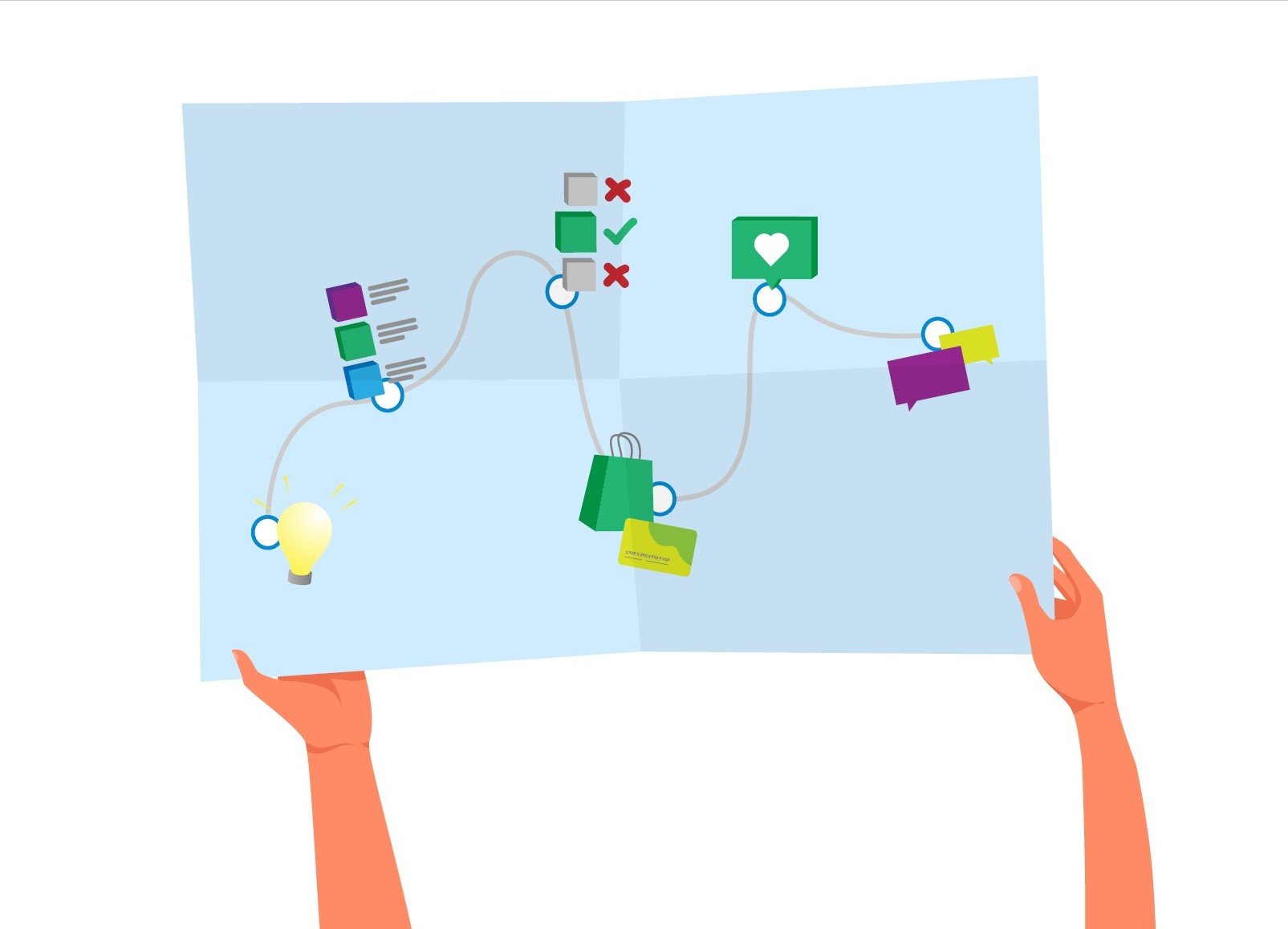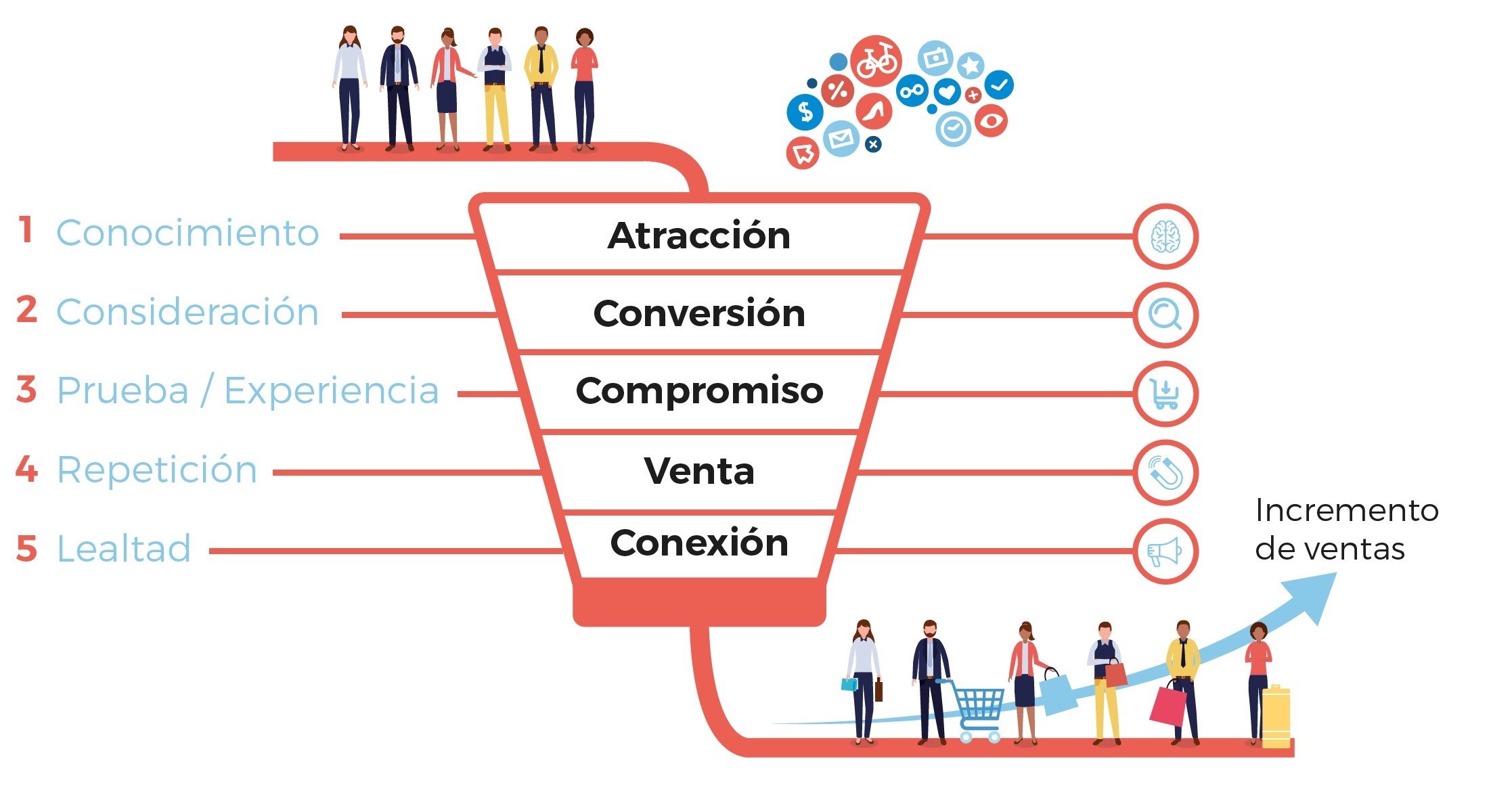More and more organisations are moving towards customer-centricity or, in other words, embracing customer-centric business strategies. We explore the customer journey model, one of the most widely used and effective customer strategies.

Customer-centric strategies are driving companies in a new direction in which knowing the problems, expectations, needs and desires of customers in order to satisfy them is a business priority, as well as being paramount to success.
These types of strategies are based on knowledge for the creation of intelligence and end up leading to action drivers that promote differentiation from the competition, personalised attention, the optimisation of the customer experience and an increase in the loyalty and customer engagement rates, among others.
Customer-centric strategies involve multiple methodologies and action plans. However, one of the first to which companies that want to become customer-centric must pay attention is the customer journey. The customer journey model promotes listening to the voice of the customer, fosters constant dialogue between the company, customers and the market and is one of the foundations for making business decisions regarding customers.
But what is the customer journey and how is it built?
What is Customer Journey?
The customer journey refers to the complete experience of a customer when interacting with a company or brand. The customer journey, therefore, covers the entire period of time in which a customer establishes some kind of interaction with our company, from the first time they enter our website, through the entire stage in which they are our customers and until they finally end their relationship with the brand. In this way, the customer journey also includes all the channels in which customer-brand communication takes place.
It is, therefore, the customer's entire "journey" through the company's channels and touch points, from the moment they have a need until it is satisfied.
The customer journey is the model to explore the customers' behaviour throughout their journey. By applying the customer journey organisations are able to answer critical questions about their customers such as:
- What drives them?
- What are their needs?
- How do they behave and why?
- What pain points do they encounter during their journey?
At the end of the day, the purpose of the customer journey is to get to know our customers and find out what their experience is throughout the entire relationship with our organisation and through all available channels in order to enhance it.
How to build a customer journey?
The first step to build a customer journey is to have a clear understanding of who our Buyer Persona —a customer segmentation model— are. Once we are clear about our expected customer archetypes according to the characteristics of our business, we can begin to build the customer journey around two axes: the purchase or conversion funnel and the customer experience
The analysis of the purchase of conversion funnel must cover our customers' entire journey, from the moment they discover our brand until they make a purchase, including all the stages a customer goes through. In most cases:
- Awareness: The customer discovers our brand, product or service.
- Consideration: The customer shows interest in the product or service and compares it with other similar products or services.
- Trial: The customer purchases the product or service.
- Repetition: The customer makes a repeat purchase.
- Loyalty: The customer recommends our products or services to acquaintances.
Obviously, not all customers go through all stages of the conversion funnel. Some potential customers will discover our company, show interest in one of our products and end up choosing another brand or simply decide they will not be making a purchase. Other customers will make a single purchase and some may only buy from us twice.
The purpose of studying the conversion funnel is to get as many customers as possible to go through all the stages of the funnel. To achieve this, all the stages through which the customer goes through must be enhanced by specific strategic actions that push the customer towards the next stage, ensuring that they continue along the path and do not abandon the process.

Customer experience
In addition to the conversion funnel, the customer journey also covers our customers' experience. The customer experience is extremely important because, now more than ever, it is what makes customers decide whether they will make a purchase or not, or whether they want to buy again if they have already done so.
Of course, the quality and value of the products and/or services we offer are also decisive. However, while years ago they held all the influence over customers, now they only have 50% of it, with the customer experience being responsible for channelling the other 50%. In an increasingly competitive market with more and more available options, customers no longer have to buy from organisations that offer them a bad experience.
When analysing our customers' experience, we must look at multiple factors such as our customers' expectations, their behaviour in each stage of the experience, the touch points or channels they use and what problems or pain points they have encountered and how we could solve them, among others.
Thus, the customer journey model explores both axes at the same time —the conversion funnel and the customer experience— merging them into a double-entry matrix in which we must include all aspects that help us understand our customers' journey.
Once we have the complete matrix, we will analyse the information gathered and go on to design an action plan to improve each stage of the customer journey with the intention of encouraging customers to move from one stage to the next, without stopping or abandoning.
Customer Journey in the age of data
Clearly, in a data-driven world, data is essential to build the customer journey.
Most organisations have a large amount of data about their customers, either in their organic systems or third party data. Thanks to digitalisation, any company that has its own website and social media profiles automatically has data on its clients or potential customers. Specific systems such as CRM or a single customer view increase the capacity to capture, manage and analyse data.
Nonetheless, the customer journey can enrich the data we already have with other methodologies used to obtein knowledge such as in-depth interviews, focus groups, market research, etc.
On the other hand, having a lot of data is not equal to producing knowledge or intelligence. For our data to become value, it is essential that it is of good quality, that it can be quantified and that we can compare data sets with other data sets. For this to be possible companies need other fundamental data processes such as data integration, data quality, interoperability, data consolidation, data governance, ETL processes, etc.
Ultimately, the quality and reliability of our data will determine the quality of our customer journey.
What is the Customer Journey for?
A customer journey model can have multiple purposes which will vary according to the business objectives set by each organisation. However, in any case, the customer journey will help us to:
- Improve the customer experience: The customer experience is one of the main axes that make up the customer journey. The process helps organisations to analyse their customers' experience in depth, addressing all the pain points that customers encounter. The analysis always results in the identification of areas for improvement and ideas to upgrade the customer experience.
- Create better touch points: When analysing the customer experience and the purchase funnel we are inevitably analyzing our touch points. Through the customer journey model we can discover if we are using the right touch points, if we should expand them, if we have too many or need more, etc.
- Stimulate innovation: Many organisations apply the customer journey model to identify innovation paths regarding a product or service, the customer experience or the brand itself.
- Increase added value: All of the above and all the other optimisation channels that arise from the customer journey increase a brand's added value in relation to customers.
- Build a better data strategy: Many organisations still lack comprehensive data strategies. However, the information required to build the customer journey forces companies to rethink their data-related processes and, in most cases, to improve them. Optimising processes and updating data assets, once the customer journey is complete, will result in better strategic decisions.
- Foster a customer-centric transformation: Carrying out a process like this forces companies to think about the customer. Whether or not they intend to develop customer-centric strategies, if they apply the customer journey model they will do so.
- Discover new business opportunities: Data analysis and the generation of knowledge about the market, customers and the brand itself often lead companies to identify new business opportunities.
Conclusión
The customer journey model has become an overdue and essential task for all companies that want to improve their performance based on customer-centric strategies. Applying the customer journey provides huge business benefits, ranging from increased revenue, increased sales and customer loyalty rates, to optimising business processes and operations, reorienting business strategies and identifying new business opportunities and expansion pathways.



